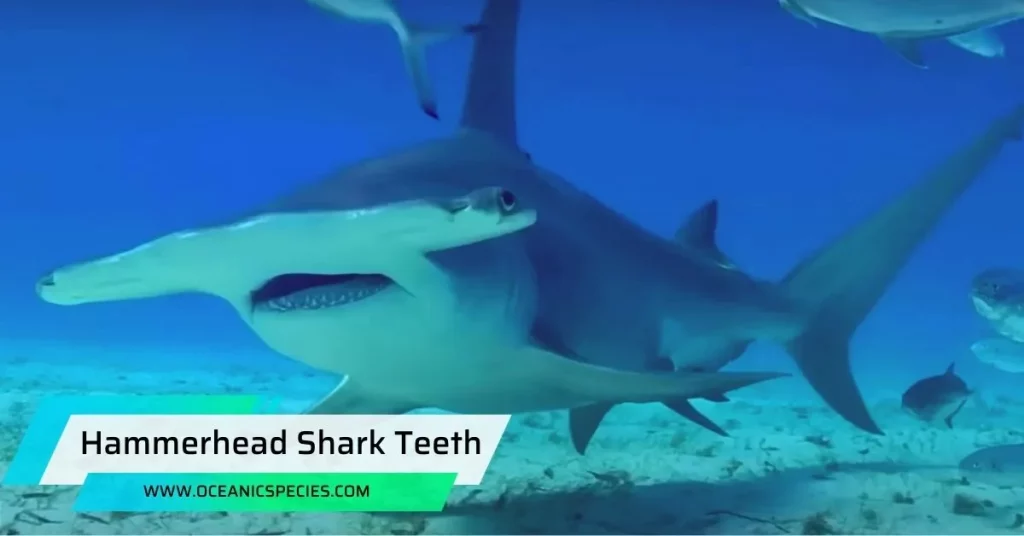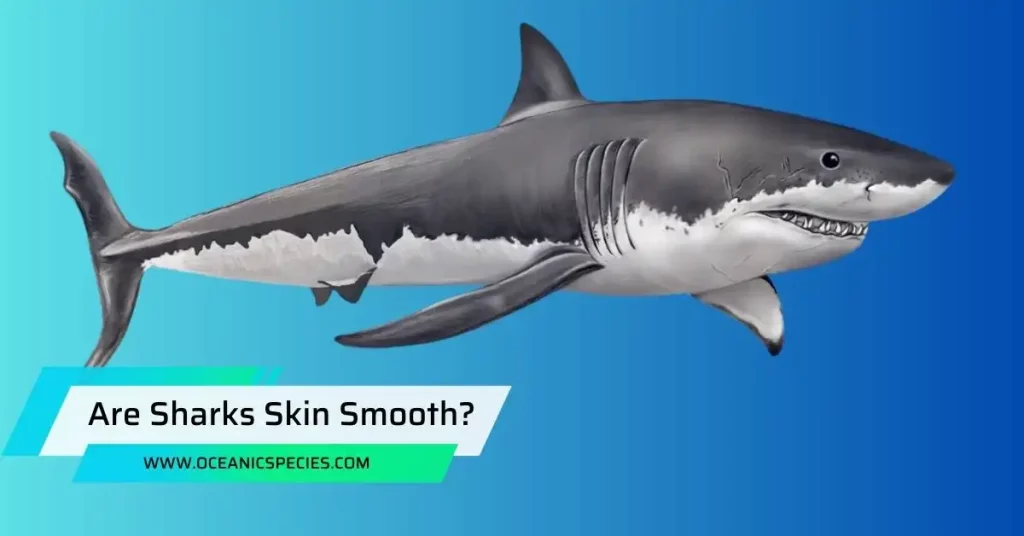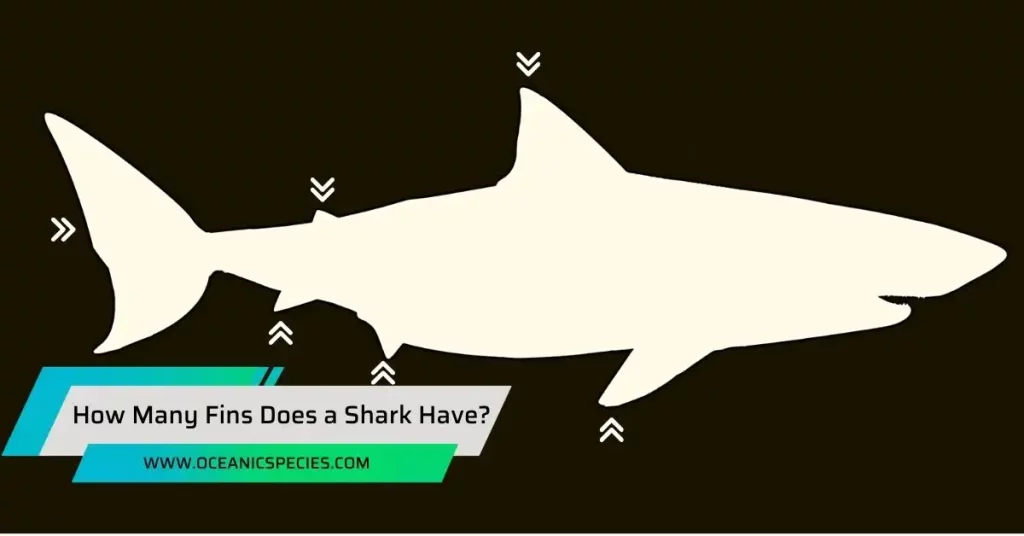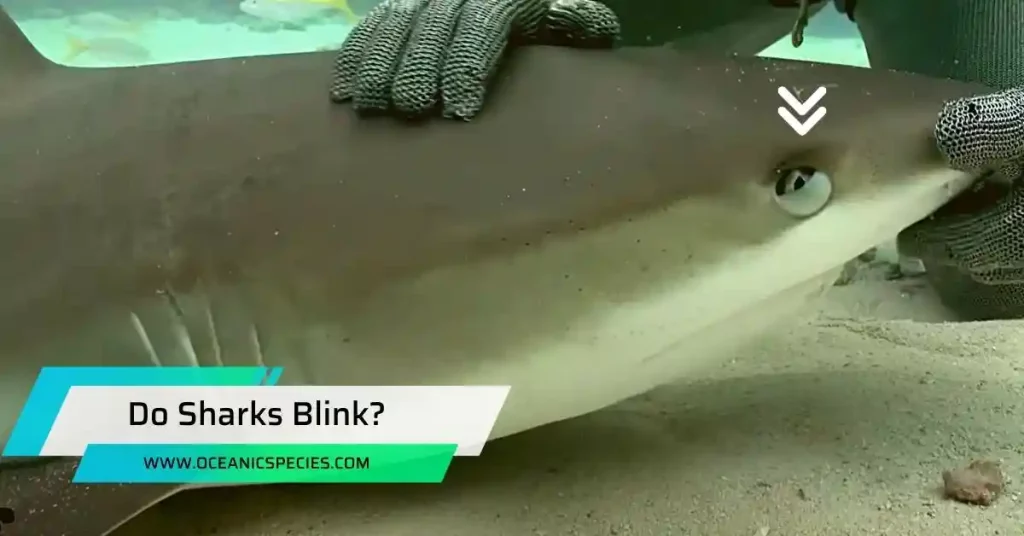A hammerhead shark has around 20 to 32 teeth in its mouth.
With a mouthful of sharp, triangular teeth, a hammerhead shark is well-equipped to tear into its food. Although the exact number of teeth can vary among different species, on average, a hammerhead shark typically has between 20 and 32 teeth in its mouth. These teeth are constantly replaced to ensure efficient hunting and feeding.
Overall, hammerhead sharks are fascinating creatures with unique adaptations that make them highly effective predators.
The Anatomy Of A Hammerhead Shark’S Teeth

Hammerhead sharks stand out from other sharks due to their unique hammer-shaped heads. While their distinct appearance may steal the spotlight, their teeth are equally remarkable. In this section, we will explore the anatomy of a hammerhead shark’s teeth, including their location, arrangement, shape, structure, and the number of teeth in their mouth.
The Location And Arrangement Of Teeth
Hammerhead sharks have teeth located in both their upper and lower jaws. The teeth are arranged in rows, with several rows in the upper jaw and fewer rows in the lower jaw. Each row contains multiple teeth, and as the front teeth wear down or fall out, new ones grow in from the back, ensuring a continuous supply of sharp teeth.
The Shape And Structure Of Teeth
Hammerhead shark teeth are triangular in shape, similar to those of many other shark species. The teeth have pointed tips and serrated edges, making them efficient tools for grasping and tearing prey. Their sharpness allows them to penetrate the flesh of their prey easily. The shape and structure of hammerhead shark teeth are specifically adapted for their hunting and feeding habits.
The Role Of Teeth In A Hammerhead Shark’s Life

One of the most intriguing aspects of these sharks is their teeth and the crucial role they play in their lives. In this section, we will explore the importance of teeth in a hammerhead shark’s life.
Hunting And Prey Capture Techniques:
Hammerhead sharks have a distinct advantage when it comes to hunting due to their specialized teeth and unique head shape. The positioning of their eyes on the side of their wide hammer-shaped heads provides them with a panoramic view, allowing them to spot prey more easily.
While hammerhead sharks primarily feed on fish, their teeth are designed to grasp and hold onto a variety of prey, including stingrays and small sharks. Equipped with sharp and serrated triangular teeth, they are capable of efficiently capturing and incapacitating their prey, preventing escape.
Chewing And Grinding Abilities:
While hammerhead sharks are known for their remarkable hunting skills, their teeth also contribute to their ability to chew and grind food. Once a hammerhead shark has captured its prey, it uses its teeth to tear and shred the flesh into manageable pieces.
Their teeth are well-adapted for grasping and mashing food apart, allowing them to break it down into smaller fragments for easier digestion. This chewing and grinding process aids in the efficient extraction of nutrients from their meals, enabling them to nourish their bodies and maintain their energy levels.
The Regeneration Process Of Teeth:
Like many sharks, hammerhead sharks have the fascinating ability to continuously regenerate their teeth throughout their lives. Due to the wear and tear of their teeth during feeding, they are constantly losing and replacing them. Hammerhead sharks possess multiple rows of teeth, with the front row being the most active and important for hunting and capturing prey.
When a tooth is lost, a new one from the row behind it will move forward to replace it, ensuring that the shark always has functional teeth available. This continuous regeneration process ensures that hammerhead sharks are always equipped with sharp and efficient tools for survival in their marine environment.
The Lifespan Of A Hammerhead Shark’S Teeth
On average, a hammerhead shark can have up to 17 rows of teeth, with each row containing about 37 individual teeth.
The Growth And Shedding Cycle Of Teeth:
A hammerhead shark’s teeth go through a continuous growth and shedding cycle throughout its lifetime. Hammerhead sharks have multiple rows of teeth, with the front row being the most functional for capturing prey. As the front row of teeth becomes damaged or worn out, new teeth from the rows behind it move forward to take their place.
Factors That Influence Tooth Loss:
- The diet of a hammerhead shark plays a vital role in tooth loss. Their prey, such as fish and rays, have hard, bony structures that can damage or dislodge their teeth during feeding.
- The intensity and frequency of feeding also contribute to tooth loss. Hammerhead sharks feed frequently, often consuming large amounts of prey, which can put strain on their teeth.
- Age is another factor that influences tooth loss. Older hammerhead sharks tend to have more worn-down teeth, leading to a higher likelihood of tooth loss.
The Importance Of Tooth Replacement:

Tooth replacement is crucial for hammerhead sharks as it ensures their continuous ability to catch and consume prey effectively. The frequent shedding of worn-out or damaged teeth allows new teeth to emerge, improving the shark’s hunting efficiency. Tooth replacement also helps maintain the balance of the shark’s jaw structure and prevents any potential dental issues that could hinder its survival in the wild.
The Unique Shape And Function Of Hammerhead Shark’s Teeth

In this section, we will delve into the unique shape and function of hammerhead shark’s teeth.
The Relationship Between Tooth Shape And Diet
The shape of a hammerhead shark’s teeth is closely related to its diet. Different species of hammerhead sharks have evolved teeth that are specifically adapted to meet their dietary needs. Here are some key points to understand this relationship:
- Blunt teeth: Some species, like the great hammerhead shark, have blunt, triangular-shaped teeth. These teeth are designed for crushing and grinding hard-shelled prey such as crustaceans and mollusks. The blunt teeth allow the shark to exert more force when crushing the shells.
- Sharp, pointed teeth: Other species, such as the scalloped hammerhead shark, possess sharp, serrated teeth. These teeth are ideal for capturing and tearing apart smaller fish and squid. The serrated edges help to slice through the prey efficiently.
- Combination of tooth shapes: Certain hammerhead species have a combination of both blunt and pointed teeth, enabling them to consume a broader range of prey items. These sharks exhibit a versatile feeding behavior, including a varied diet of fish, squid, and crustaceans.
The Adaptable Teeth For Capturing Different Prey Types
Hammerhead shark’s teeth are not only specialized in shape but also highly adaptable for capturing different prey types.
Like most sharks, hammerheads have multiple rows of teeth that are constantly being regenerated. If a tooth is lost during feeding or damaged, a new one will quickly replace it. This continuous tooth replacement ensures the predator always has functional teeth for hunting and consuming prey.
The Factors That Affect The Number Of Hammerhead Sharks’ Teeth
- Various factors contribute to the number of teeth a hammerhead shark possesses.
- One important aspect is the shark’s age, as younger individuals typically have fewer teeth compared to mature sharks.
- Additionally, tooth loss due to feeding activities and natural wear and tear also influence the overall number of teeth.
- Environmental factors and dietary preferences may also play a role in the number of teeth a hammerhead shark develops.
Conclusion
The hammerhead shark is a fascinating creature with a unique set of teeth that contribute to its hunting and feeding habits. With its remarkable head shape containing rows of sharp, serrated teeth, the hammerhead is perfectly designed to capture and devour its prey efficiently.
These teeth function to tear apart the flesh of smaller fish, squid, and other marine creatures, allowing the shark to consume its meal with ease. By understanding the dental anatomy of the hammerhead shark, researchers and marine enthusiasts can gain insights into the species’ behavior, diet, and habitat.





